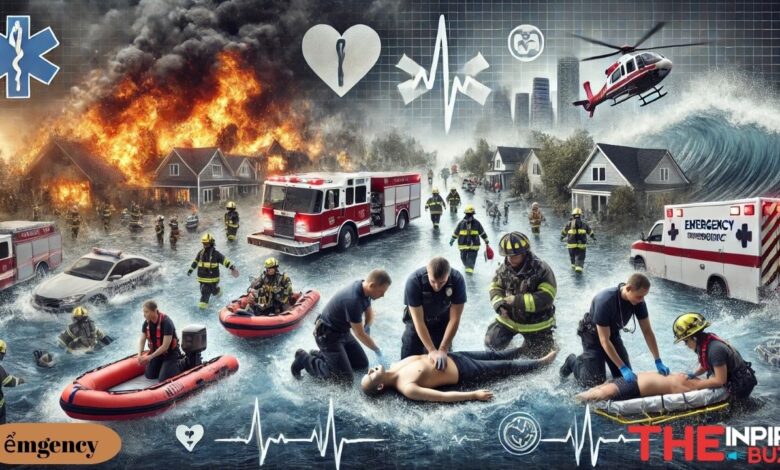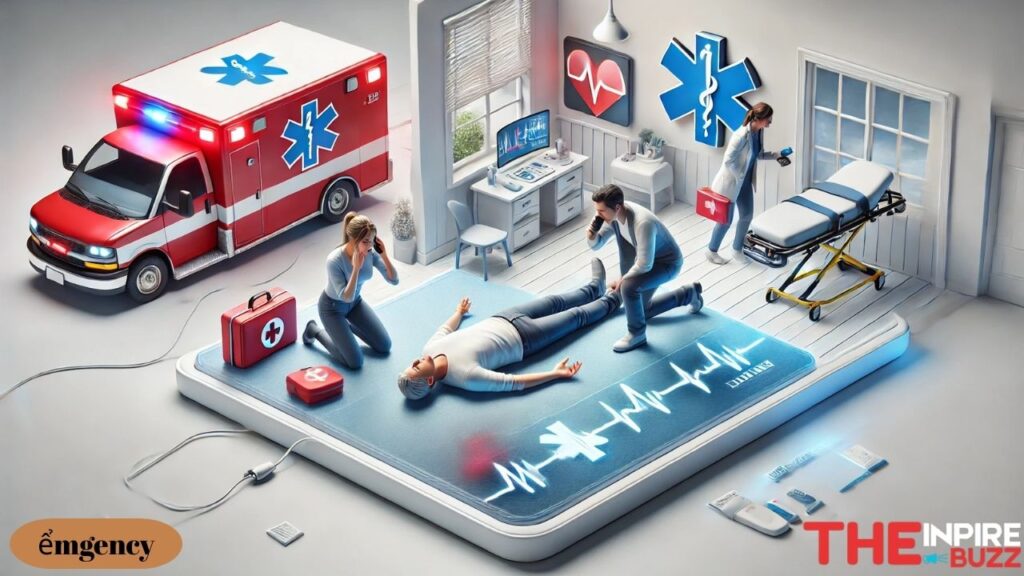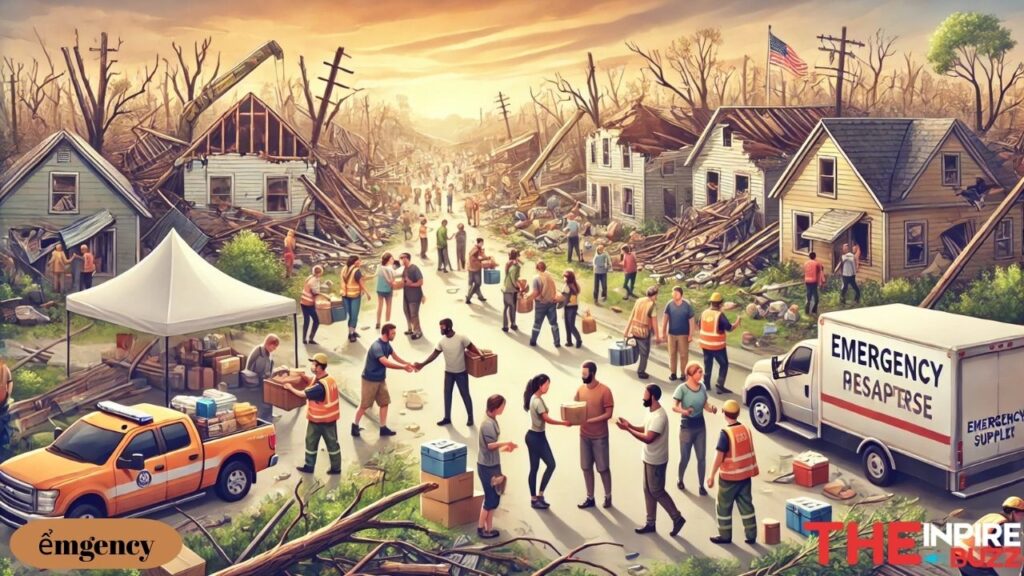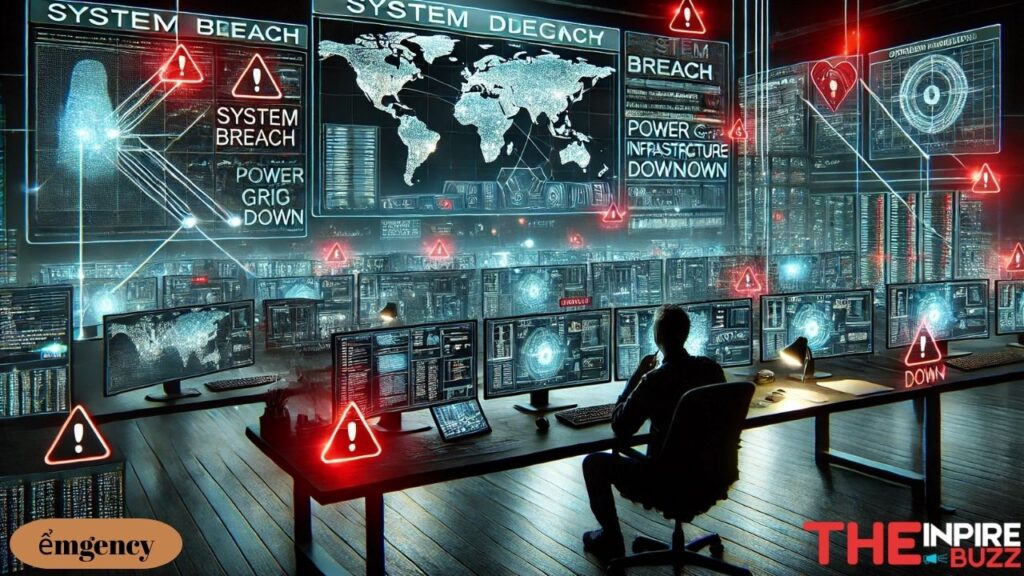Understanding ểmgency Your Complete Guide to Emergency Preparedness and Response

What Is an Emergency? Definition and Scope
While “ểmgency” might not appear in standard dictionaries, this term likely refers to “emergency”—a critical situation demanding immediate attention. An emergency is fundamentally an unexpected, dangerous event that threatens lives, health, property, or environmental safety, requiring swift and decisive action to prevent catastrophic outcomes.
The complexity of modern emergencies extends far beyond simple accidents. Today’s interconnected world means that a single incident can cascade into multiple crisis points, affecting communities in ways previous generations never imagined. From individual medical emergencies that require split-second decisions to massive natural disasters that reshape entire regions, the scope of what constitutes an “ểmgency” continues to evolve with our changing world.
Understanding emergency situations requires recognizing that they exist on a spectrum of severity and impact. A house fire affects a family and neighborhood, while a hurricane impacts millions across multiple states. Yet both scenarios share common elements: unpredictability, urgency, and the potential for serious consequences if not addressed promptly and effectively.
The definition of emergency also varies by context and authority. What healthcare professionals consider a medical emergency differs from what emergency managers classify as a disaster-level event. Legal definitions established by governments create frameworks for resource allocation and response authority, while community-level understanding shapes how individuals prepare and react when crisis strikes.
Types of Emergencies: Understanding the Full Spectrum of Crisis

Every “ểmgency” situation presents unique challenges, but understanding the broader categories helps communities prepare more effectively for various scenarios. Modern emergency management recognizes that today’s crises often blur traditional boundaries, creating complex situations that require multi-faceted responses.
Immediate Threats to Life and Health
Medical emergencies represent perhaps the most time-sensitive category of crisis situations. These include cardiac events like heart attacks, neurological emergencies such as strokes, severe trauma from vehicle accidents or falls, acute poisoning from chemicals or medications, and life-threatening allergic reactions known as anaphylaxis.
What makes these situations particularly challenging is the narrow window for effective intervention. Brain cells begin dying within minutes during a stroke, while cardiac arrest requires immediate CPR to maintain any chance of survival. Emergency medical professionals use sophisticated triage systems to prioritize these cases, ensuring the most critical patients receive immediate attention while managing limited resources effectively.
Community-Wide Health and Environmental Emergencies
Large-scale health crises affect entire populations and can persist for months or years. The COVID-19 pandemic demonstrated how quickly infectious diseases can spread globally, overwhelming healthcare systems and disrupting daily life for billions of people. These situations require coordination between public health officials, healthcare providers, government agencies, and community organizations.
Environmental emergencies present equally complex challenges. Chemical spills can contaminate water supplies for thousands of residents, while air quality emergencies from wildfires or industrial accidents can force mass evacuations. Climate-related emergencies like severe droughts, extreme heat waves, or unprecedented flooding are becoming more frequent and severe, requiring communities to adapt their emergency response strategies to address these evolving threats.
Security and Infrastructure Emergencies
Modern society’s dependence on complex systems creates new categories of emergency situations. Cyber attacks on power grids, transportation networks, or financial systems can paralyze entire regions without traditional physical damage. Civil unrest, terrorist threats, and major transportation accidents often trigger formal emergency declarations, requiring coordinated responses from law enforcement, emergency management, and government officials.
These situations are particularly challenging because they may involve deliberate human action rather than natural causes, requiring different response strategies that consider ongoing threats and the need to preserve evidence while protecting public safety.
Advanced Classification Systems: How Professionals Manage Crisis Response

Effective “ểmgency” management relies on sophisticated classification systems that help responders quickly assess situations and allocate resources where they’re needed most. These systems have evolved significantly over decades of emergency response experience, incorporating lessons learned from major disasters and technological advances in communication and coordination.
Multi-Tiered Priority Assessment
Emergency response agencies employ comprehensive assessment protocols that go far beyond simple urgency rankings. The Advanced Medical Priority Dispatch System (AMPDS) serves as one example, using structured questioning techniques to rapidly categorize medical emergencies based on life threat, time sensitivity, and required resources. Similar systems exist for fire response, law enforcement, and disaster management.
These classification systems consider multiple variables simultaneously: the number of people affected, potential for situation escalation, weather conditions, available resources, geographic challenges, and the presence of special populations like children or elderly residents. This multi-dimensional approach ensures that response decisions account for the full complexity of emergency situations rather than relying on single-factor assessments.
Dynamic Response Protocols
Modern emergency classification systems are designed to adapt as situations evolve. What begins as a simple medical emergency can escalate into a mass casualty incident if additional factors emerge, such as hazardous materials exposure or structural collapse. Response protocols include built-in escalation procedures that automatically trigger additional resources and coordination mechanisms when certain thresholds are met.
These dynamic systems also incorporate real-time data from multiple sources, including weather monitoring stations, traffic management systems, social media platforms, and citizen reports through emergency apps. This comprehensive information gathering enables emergency managers to make more informed decisions about resource deployment and public safety measures.
Legal Authority and Jurisdictional Coordination
Emergency classification systems operate within complex legal frameworks that define authority, responsibility, and resource access during crisis situations. British Columbia’s Emergency and Disaster Management Act exemplifies how legal structures establish clear protocols for multi-agency coordination while protecting individual rights and ensuring accountability in emergency response decisions.
These legal frameworks become particularly important during cross-jurisdictional emergencies, where local, state, and federal authorities must work together. Clear classification systems help determine which agency takes lead responsibility, how resources are shared between jurisdictions, and when higher-level authorities should assume control of emergency operations.
Agencies and Coordination: Who Responds in an Emergency

Effective emergency response relies on a comprehensive network of specialized agencies, each contributing unique capabilities and expertise to protect communities during crisis situations.
Government Emergency Management
Local and national emergency management agencies serve as the backbone of disaster response systems. In the United States, State Emergency Management Agencies provide essential resources, coordination services, and preparedness tools to communities facing various threats. These organizations maintain emergency plans, coordinate training exercises, and establish communication protocols for multi-agency response efforts.
Federal agencies like FEMA provide additional support during major disasters, offering financial assistance, specialized equipment, and expertise that local communities may lack during large-scale emergencies.
Healthcare Emergency Response
Healthcare systems play a crucial role in emergency response through organizations like the American College of Emergency Physicians (ACEP), which supports clinical responses and advocates for policies that improve emergency medical care. Hospitals maintain emergency preparedness plans and work closely with emergency medical services to ensure seamless patient care during crisis situations.
Multi-Agency Collaboration
Additional stakeholders include police departments, fire services, emergency medical services, public health organizations, and volunteer groups. Each agency brings specialized skills and resources, requiring careful coordination to avoid duplication of efforts and ensure comprehensive coverage of emergency response needs.
Clear communication protocols and defined roles ensure that emergency response efforts remain effective, timely, and focused on protecting lives and supporting affected communities throughout the crisis and recovery phases.
Recognizing and Preparing for Emergencies
Individual and household preparedness forms the foundation of effective emergency response, as first responders may not be immediately available during widespread incidents or in remote locations.
Recognizing Medical Emergencies
According to MedlinePlus and other medical authorities, several warning signs indicate serious medical emergencies requiring immediate professional intervention. These include severe chest pain that may indicate heart attack, uncontrollable bleeding, difficulty breathing or shortness of breath, loss of consciousness, sudden behavioral changes or confusion, and severe allergic reactions.
Additional warning signs include symptoms of stroke such as sudden weakness on one side of the body, difficulty speaking, or severe headache. Recognizing these signs early and responding quickly can significantly improve outcomes for affected individuals.
Personal Preparedness Steps
Effective emergency preparedness involves several key components that individuals and families should implement before crisis situations arise. First, everyone should know local emergency contact numbers and identify the fastest routes to nearby hospitals and emergency services.
Keeping emergency contacts clearly posted and programmed into phones ensures quick access during stressful situations. These contacts should include neighbors, family doctors, local emergency services, and utility companies for reporting outages or hazards.
Home Emergency Preparedness
Preparing homes with essential emergency supplies can make a significant difference during various crisis situations. Basic first-aid supplies should include bandages, antiseptic, pain relievers, and any prescription medications family members require regularly.
Fire extinguishers should be strategically placed and family members should understand proper usage techniques. Emergency kits for natural disasters should contain water, non-perishable food, flashlights, batteries, battery-powered radio, and important documents in waterproof containers.
Staying Informed
Modern emergency warning systems provide crucial information during developing situations. Wireless Emergency Alerts through platforms like Cal OES deliver time-sensitive information directly to mobile devices, helping people make informed decisions about evacuation, shelter-in-place orders, or other protective actions.
These preparations significantly reduce risk and improve outcomes when emergencies strike, giving individuals and families better chances of remaining safe until professional help arrives.
States of Emergency: Legal Authority and Public Response
When emergency situations escalate beyond local response capabilities, governments may declare formal states of emergency, granting special powers and resources to respond more effectively to threats facing communities.
Emergency Declaration Powers
Emergency declarations provide authorities with expanded capabilities to protect public safety during crisis situations. These powers may include ordering evacuations from dangerous areas, accessing additional financial resources normally requiring lengthy approval processes, temporarily bypassing certain regulations that might impede response efforts, and coordinating rapid deployment of personnel and equipment across jurisdictional boundaries.
During declared emergencies, officials can also implement curfews, restrict access to affected areas, commandeer private resources when necessary for public safety, and establish temporary shelters or medical facilities to support affected populations.
Implementation and Scope
Emergency declarations often accompany extreme events like major floods, widespread wildfires, severe storms, or public health crises such as disease outbreaks. These declarations enable both immediate response operations and longer-term recovery efforts across multiple levels of government, from local municipalities to state and federal agencies.
The scope of emergency declarations varies based on the nature and extent of the threat, with some affecting small geographic areas while others may encompass entire states or regions. Duration also varies, with some lasting only hours while others may remain in effect for weeks or months during extended recovery operations.
Public Compliance and Community Response
Understanding the legal mechanisms behind emergency declarations helps community members trust and comply with public safety measures that may seem restrictive but are designed to protect lives and property. Public cooperation with evacuation orders, travel restrictions, and other emergency measures significantly improves the effectiveness of response efforts.
Community education about emergency declaration procedures builds public confidence in government response capabilities and encourages appropriate behavior during crisis situations, ultimately saving lives and reducing property damage.
Conclusion
Though “ểmgency” may not be a formal word in standard dictionaries, its likely intended meaning—emergency—carries immense importance in modern society. Emergency situations touch every level of our communities, requiring comprehensive approaches that include clear definitions and classification systems, coordinated responses from multiple agencies, public awareness of warning signs and preparedness strategies, and legal frameworks like states of emergency that enable authorities to mobilize resources effectively when time is critical.
By building awareness and readiness through education, planning, and preparation, individuals and governments can better safeguard life, health, and property when seconds matter most. The investment in emergency preparedness pays dividends not only during actual crisis situations but also in building resilient communities that can recover more quickly and effectively from disasters and other threatening events.
Also Read: Poieno Exploring the Rich Meanings Behind an Uncommon Word




